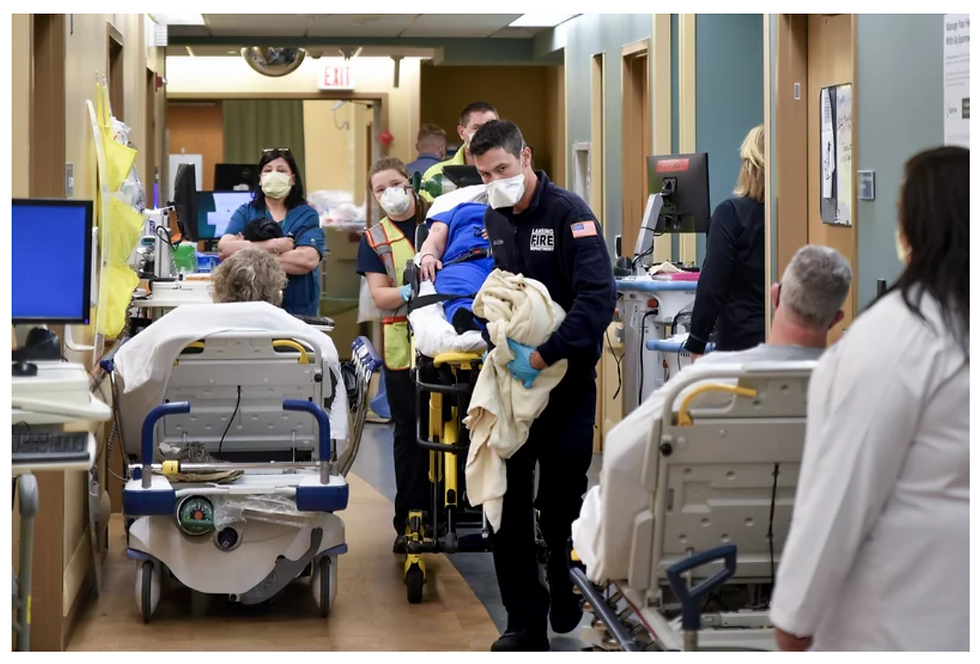Pairing Wound Imaging Software with Expertise
- Joe Ebberwein

- Feb 25, 2021
- 3 min read
Updated: Feb 26, 2021

In recent years, technology has advanced, enabling wounds to be photographed, auto-measured, and analyzed for progression or decline. This represents a significant step forward in the ability to manage wound patients, as it standardizes the collection of wound measurements for benchmarking of wound healing rates associated with the effectiveness of wound treatments and associated wound products. In the last few years, there has been a proliferation of technology solutions, ranging in function from simple photograph documentation of the wound to advance clinical decision support. FDA considerations loom, as technology moves from documentation to clinical interpretation.
Wound imaging technologies are being deployed in the Post-Acute provider market, including skilled nursing facilities, home health, and even hospices. A serious question arises! How much value can this technology afford the provider, if there are no wound experts to review the information and provide an evidence-based recommendation?
Think for a moment about the Teleradiology movement. The technology without having a board-certified radiologist on the other end to interpret the image brings no benefit, in fact, it would create significant liability! Core to the “Gold Standard” of wound care management is access to Board-Certified Wound Experts - specialized, well-trained, experienced wound nurses who are versed in analyzing wound images, monitoring wound progress, developing and implementing wound treatment plans, as well as, understanding the complexities of co-morbidities and skin integrity issues common to aging populations cared for in the Post-Acute settings.
Unfortunately, wound imaging and analysis technology alone does not make a bedside nurse a wound care expert capable of managing complex and chronic wounds. Across the board in Post-Acute settings, studies indicate as high as 30% rates for misidentification of wound etiology and as high as 50% error on pressure injury staging. Compounding this problem is the reality that Post-Acute providers are dealing with a severe shortage of Board-Certified Wound Nurses given that only 10% of these nurses practice in the Post-Acute setting.
The fact is that Board-Certified Wound Nurses are difficult to recruit and retain. On any given day, there are hundreds of open job postings for these roles, some of which have been vacant for as long as a year. What are the options for the provider who wants to create a Wound Program of Excellence? There are a number of foundational building blocks that a provider must focus their efforts around.
Implement Wound Imaging and Analysis Technology. Without proper measurement, it is difficult to assess and monitor changes in the wound from visit to visit during the episode of care. Home Health providers should utilize wound imaging technology as it promotes wounds being measured with greater accuracy and consistency. Given that bedside nurses often measure wounds differently, this technology ensures a consistent image and accurate measurement of the wound which supports legal defensibility and survey readiness. Additionally, it allows the wound nurse to adjust the care plan in a timely manner to heal wounds faster at a lower cost.
Get More Expertise to the Bedside. As previously stated, the etiology of a wound is misidentified as much as 30% of the time. Wound treatments are developed based on accurate identification of the wound type, therefore, 30% of the time the wrong treatment plan is being used, often resulting in delayed healing or non-healing. To build a Wound Program of Excellence, providers must either hire board-certified wound nurses or contract with the expertise. The right treatment plan, implemented the first time, can prevent the slow-healing, chronic wound that prolongs a patient’s suffering and requires a tremendous amount of nursing time, supplies, and additional resources.
Optimal Wound Formulary. The right formulary can make all of the difference, assuming the wound is correctly identified. Advanced dressings can address various wound conditions and optimally allow for extended dressing wear time to promote faster healing. An optimal advanced dressing formulary incorporated into an evidence-based treatment plan results in less resource consumption for better clinical and financial outcomes.
Wound Prevention and Wound Treatment Training. All members of the multidisciplinary care team (RNs, LPNs, HHAs, etc.) play a critical role in the prevention and treatment of wounds. The clinical team needs the proper training regarding accurate wound measurements, assessment and documentation of the wound progress, identification and application of advanced dressings, early identification of pressure injuries, accurate calculation of a Braden Score, and identification of patients at risk for pressure injuries.
Corstrata’s senior-level, wound-certified nursing staff are some of the best and most experienced in the industry. We couple the expertise with the most advanced wound dressing technology, latest evidence-based research, and a Telehealth infrastructure to ensure that we deliver the right patient support at the greatest point of need – the bedside.




Comments